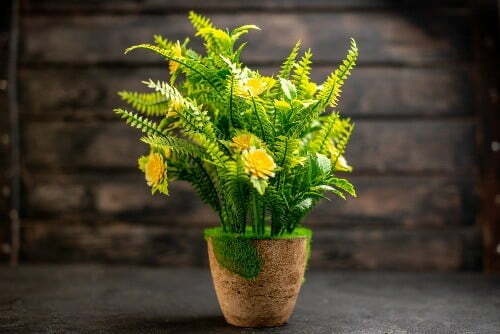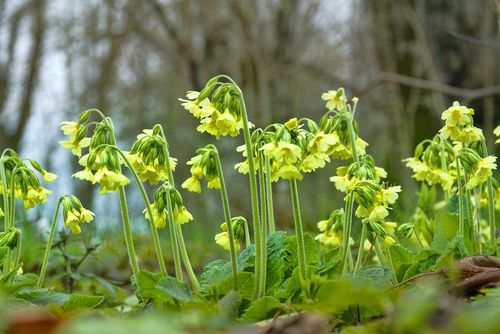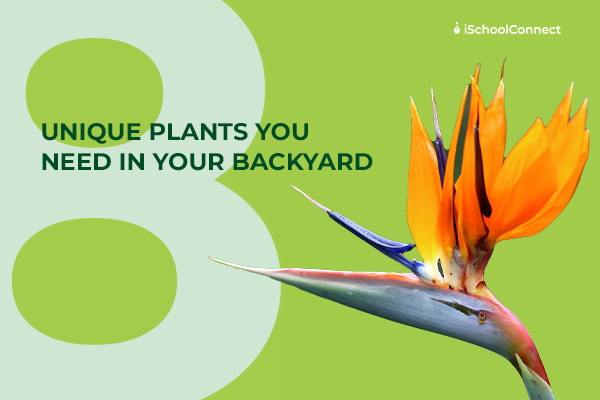Table of Contents
Plants are extremely vital to the long-term survival and sustenance of the ecosystem. From providing habitats to controlling air pollution, and improving soil quality, plants have a fundamental role to play in everyday life and functioning.
Learning more about the different types of plants that thrive on the planet can help you recognize their contributions to your day-to-day life. Plants also exist across a wide variety, requiring classification to better understand their functions.
Here is everything you need to know about the different types of plants, classified based on their growth habits and life cycle!
What are the parts of a plant?

Plants are living organisms that can establish themselves either on land or in water. One of the unique aspects of plant life is that it can thrive almost anywhere in the world, from the dry environment of a desert to ice-capped mountains!
Another unique feature of plants is their ability to create their food. The process is called photosynthesis. This process makes use of sunlight, carbon dioxide, and water as the required resources.
Unlike animals and human beings, plants are rooted in the ground and cannot move from one place to another.
Based on their parts, there are two types of plants worth learning about –
- Flowering plants
These types of plants bear flowers. Examples include sunflowers, roses, and orchids.
- Non-flowering plants
These types of plants do not bear flowers. Examples include mosses and ferns.
Understanding the different parts of a plant can help you recognize how classification is conducted amongst the different species.
Plants have two distinct and interconnected systems: the shoot and the root systems.
- Shoot system
The shoot system of a plant comprises the following parts –
- Stem – Supports the plant
- Fruit – Protects and encases the seeds of the plant
- Leaf – Performs the important process of photosynthesis
- Flower – Assists in reproductive functioning of the plant
- Root system
The root system comprises the part of plants that are found underground. Roots are the most important parts of the plant. Their primary function includes the absorption of minerals and water from the soil. Some roots even store food material that the plant can use at a later stage.
What is a growth habit?
Plants are typically classified based on their growth habits or plant habits. A growth habit refers to the plant’s diverse properties and life characteristics. These include the shape and appearance of the plant and the growth form of a certain species.
Growth habits often form, from specific genetic patterns in combination with external factors.
What are the different types of plants based on size and growth habits?
Based on size and growth habits, the 5 major types of plants are as follows –
Herbs
Herbs are among the smallest types of plants that exist in the plant kingdom. These plants do not grow more than a foot or a few centimeters in height.
The plant body is typically made up of soft stems. Generally, herbs have little to no branches.
A key characteristic of herbs is that they are filled with minerals and vitamins and are regarded as an essential part of a human being’s daily diet.
Examples of herbs include paddy, ginger, and tomato.
Shrubs
Shrubs refer to woody, medium-sized plants that are taller than herbs but shorter than trees. These types of plants have heights ranging from 6 meters to 10 meters.
Some of the features of shrubs include hard & woody stems with several branches. While the stems are hard, they are not fragile and are quite flexible.
Examples of shrubs include basil, cherry, and rosemary.
Trees
Trees are the biggest types of plants in the plant kingdom and are characterized by thick, hard, and woody stems called the trunk. A single trunk of a tree gives rise to several branches that bear leaves, flowers, and fruits.
Some trees (like coconut trees) have only one main stem or trunk that bears all the leaves, flowers, and fruits by itself.
Some of the best examples of trees include teak, oak, and mango.
Climbers
Climbers are types of plants characterized by weak, thin, and long stems. A climber plant cannot stand erect on its own but can grow vertically with external supports that can carry the plant’s weight.
Some of the most popular climber plants include grapevine, money plant, and runner beans.
Creepers
Creepers are types of plants that grow along the ground and are very fragile. Thin and long stems characterize these plants, much like their climber counterparts. Creepers cannot stand straight on their own or support their weight by themselves.
Examples of creepers include sweet potato, pumpkin, and strawberry.
What are the different types of plants based on their life cycle?

Plants are often referred to as the longest living beings on the planet. Every plant completes its entire life cycle, depending on its genetic factors and surroundings.
Based on the life cycle, there are four types of plant classifications –
Ephemeral
Ephemerals are types of plants that comprise a short life span. Their life cycle only spans a few weeks, within which they grow, reproduce, and die.
Examples of ephemerals include bloodroot and Great White trillium.
Annual
Annual plants are types of plants that sustain for approximately one year. Typically, these plants are grown as crops.
Examples include maize and watermelon.
Biennial
Biennials require approximately two years to complete their life cycle of growth, reproduction, and decay. The flowering process characterizes the first year and gradual death in the second year.
Examples include carrots and potatoes.
Perennial
Finally, perennial plants are types of plants that have the longest life span of all. They can grow for several years and do not have any fixed age by which they complete their biological cycle. If their life cycle is not interrupted, they can even grow for hundreds of years.
Examples include purple coneflowers and strawberries.
Key takeaways
- Plants are among the most abundant species on the planet and occupy a wide range of habitats.
- These are living beings that have a unique characteristic of producing their food with the help of sunlight, water, and carbon dioxide.
- Plants are divided into different types based on their growth habits, characteristics, and life cycles.
- Understanding the different types of plants that exist in the plant kingdom can be beneficial in identifying the roles they play in sustaining life on Earth.
Did you enjoy this blog? If yes, please share your thoughts in the comments below. Click here to reach out to us for more information on the different types of plants. We would be happy to assist you with your queries!
Liked this blog? Read next: Ikigai book | Reasons to read, summary, and much more!
FAQs
Q1. Where is the maximum amount of plant life on Earth found?
Answer – Approximately 85% of plant life lives in the oceans!
Q2. How do plants help in combating the effects of climate change?
Answer – Carbon dioxide is one of the main greenhouse gases that contribute to climate change. Plants use carbon dioxide and release oxygen through the process of photosynthesis. By regulating the levels of carbon dioxide in the atmosphere, plants can combat the effects of climate change.
Q3. What kind of plant is a lemon?
Answer – Lemon is a shrub, which is a medium-sized woody plant.






